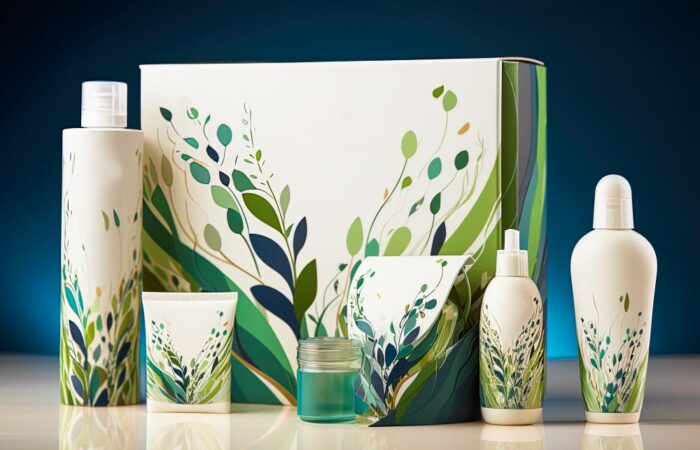In today’s highly competitive cosmetics market, customized cosmetic packaging has become an important means for brands to differentiate themselves from competitors and attract consumers’ attention. Superior packaging design not only improves the product’s visual appeal but also elevates the consumer experience and bolsters the brand’s reputation. This article explores how custom cosmetic packaging can be key to enhancing product design by considering aspects such as materials, regulatory compliance, label design, size and capacity, aesthetics and brand excellence, as well as functionality and user experience.
Importance of Materials
Selecting appropriate packaging materials is essential for maintaining product integrity and minimizing ecological effects. Utilizing sustainable options like biodegradable plastics, recycled paper, and glass not only diminishes environmental footprints but also reflects a brand’s dedication to preserving the environment. In addition, high-quality materials can also enhance consumers’ perception of product quality and increase their purchase intention. We will talk about the impact of materials on these two products, Color Cosmetics, and Skincare Products, in detail.
Packaging Materials for Color Cosmetics
Color cosmetics, such as lipstick, eyeshadow, and blush, often pursue innovative and attractive appearance designs to enhance brand image and boost product sales. Therefore, the choice of packaging materials tends to favor materials that can provide a rich color and decorative effect, like high-gloss metals, iridescent plastics, and exquisite glass. These materials not only create a unique and appealing packaging appearance but can also enhance visual effects through special surface treatments (such as gold stamping, UV coating, and pearlescent effects), standing out in a retail environment.
Packaging Materials for Skincare Products
In contrast, skin care product packaging focuses more on the functionality and protective qualities of the material. Skincare products like creams, serums, and cleansers require packaging materials that can effectively protect the product from external contamination and exposure to light, extending the shelf life of the product. Common materials for skincare packaging include opaque glass bottles, medical-grade plastics, and metal tubes, which not only provide excellent sealing performance but also prevent product degradation due to light exposure. Additionally, skincare packaging design is increasingly focusing on eco-friendliness and sustainability, favoring recyclable, biodegradable, or recycled materials to minimize environmental impact.
Impact of Material Choice on Consumer Experience
The choice of packaging material not only affects product protection and shelf life but is also directly related to the consumer’s usage experience. For example, packaging designs that are easy to open and reseal can enhance consumer convenience; lightweight and portable packaging is more suitable for daily use or travel. Furthermore, the texture and tactile experience of packaging materials are important factors in enhancing perceived value and brand image for consumers.
Regulatory Compliance
Ensuring compliance with applicable industry regulations and standards in packaging design is paramount. This includes restrictions on materials, product safety requirements, and recycling guidelines. Compliant packaging not only protects consumers but also avoids the financial and reputational damage caused by non-compliance with regulations.
Label Design Essentials
Labels not only carry brand information and product details, but they are also an important part of regulatory compliance. Clear and easy-to-read label designs can help consumers quickly obtain product information and enhance their sense of trust. At the same time, innovative labeling technologies such as AR labels can provide a more interactive consumer experience.
Size and Capacity Considerations
Packaging size and capacity should be determined based on product characteristics and consumer demand. Appropriate packaging size is not only convenient to carry and use, but also effectively controls costs. At the same time, designers should consider the consistency of product lines to ensure a unified brand image.
Aesthetics and Brand Excellence
The aesthetic design of packaging is key for a brand to communicate its values and appeal to its target market. Tailored patterns, hues, and textures have the power to distinguish products and bolster brand identity. Additionally, the uniqueness of the packaging makes the product ideal for gifting.
Functionality and User Experience
Designing cosmetic packaging should prioritize functionality and the overall user experience. Easy-open packaging, refillable designs, and increased convenience of use can significantly increase consumer satisfaction. With a deep understanding of user experience, designers can create packaging solutions that are both beautiful and functional.
Conclusion
Custom cosmetic packaging is an important aspect of improving product design. By carefully selecting materials, ensuring regulatory compliance, designing easy-to-understand labels, considering size and capacity, pursuing aesthetic and brand excellence, and optimizing functionality and user experience, brands can create packaging that is both beautiful and functional to compete with the competition. stand out in the market.



